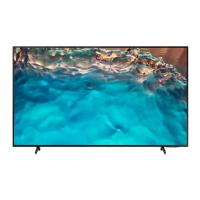
Do you have a question about the Samsung UA85BU8000WXXY and is the answer not in the manual?
| Screen Size | 85 inches |
|---|---|
| Display Technology | LED |
| Smart TV | Yes |
| HDR | Yes |
| HDR Format | HDR10+ |
| HDMI Ports | 3 |
| USB Ports | 2 |
| Audio Output | 20W |
| Picture Engine | Crystal Processor 4K |
| Operating System | Tizen OS |
| Bluetooth | Yes |
| WiFi | Yes |
| Refresh Rate | 60Hz |
| Processor | Crystal Processor 4K |
| Number of Speakers | 2 |
| Voice Assistants | Bixby, Alexa, Google Assistant |
| Resolution | 3840 x 2160 |
| Weight | 41.5 kg |
Details on connecting various external devices to the TV.
Instructions for connecting mobile devices for screen sharing and content access.
Guides for connecting and using a PC with the TV.
Information on connecting various input devices for TV control.
Steps to connect the TV to a network using a LAN cable.
Instructions for connecting the TV to a wireless network.
How to share your mobile device's screen using the Smart View feature.
Guide for using Apple AirPlay to display iPhone/iPad content on the TV.
Customizing names and icons for connected external devices.
Accessing and controlling your PC from the TV.
Controlling external devices using the Samsung TV remote.
Important considerations when using HDMI cables for connection.
Detailed overview of the Samsung Smart Remote buttons and functions.
Guidance on how to effectively use the Samsung Smart Remote.
Steps to connect USB keyboards, mice, or gamepads to the TV.
Steps to connect Bluetooth keyboards, mice, or gamepads to the TV.
Accessing apps, games, and content through Smart Hub.
Using Art mode function to display image content like artworks or photos.
Viewing TV programs and using apps from Smart Hub.
Managing external devices and configuring TV settings.
Managing and installing applications on the TV.
Steps to manage your Samsung account, including sign-out and profile editing.
Configuring and checking network connection settings.
Optimizing viewing experience by analyzing surroundings and content.
Selecting the picture mode for the best viewing experience.
Selecting the preferred sound mode for content type or environment.
Turning the subtitle function on or off for TV broadcasts.
Setting the TV to automatically turn off after a specified period.
Reducing TV energy consumption through various settings.
Selecting and managing external devices connected to the TV.
Viewing multiple content items simultaneously on the TV screen.
Steps to manage your Samsung account, including sign-out and profile editing.
Guide for remotely connecting to a PC for TV usage.
Searching for and finding available applications on the TV.
Steps to uninstall applications from the TV.
Customizing the Home Screen by adding favorite applications.
Using the SmartThings app for TV remote control and function access.
Setting the input lag status for optimal gaming performance.
Selecting the appropriate picture mode for different game genres.
Activating FreeSync for seamless gaming without interruption or delay.
Viewing programming schedules and information for different TV channels.
Managing scheduled recordings and viewings for TV programs.
Viewing and managing recorded TV programs.
Scheduling future TV programs for recording.
Selecting the broadcast signal source for channel reception.
Displaying and managing a list of favorite TV channels.
Steps for scanning and tuning available TV channels.
Managing channel numbers, including enabling/disabling editing.
Optimizing viewing experience by analyzing surroundings and content.
Selecting the picture mode for the best viewing experience.
Adjusting the aspect ratio and size of the displayed picture.
Optimizing the TV screen for better gaming performance.
Selecting the preferred sound mode for content type or environment.
Resets all current sound settings to their default values.
Choosing which speakers the TV uses for audio output.
Setting up surround sound configurations with Samsung Wi-Fi audio devices.
Setting the current time and using the timer function.
Setting the TV to automatically turn off after a specified period.
Setting the TV to automatically turn off at a specific time.
Changing power preferences and using energy-saving options.
Instructions for updating TV software via a network connection.
Instructions for updating TV software using a USB drive.
Controlling content access based on program ratings for children.
Locking specific channels to prevent children from watching adult content.
Quick access to accessibility functions like Voice Guide and Subtitle.
Activating spoken menu descriptions for visually impaired users.
Adjusting the font size on the screen for better readability.
Learning the functions and locations of remote control buttons.
Turning the subtitle function on or off for TV broadcasts.
Choosing the default subtitle language for broadcasts.
An application to help color blind people experience richer TV color views.
Choosing which Voice Assistant to use for TV control.
Changing the language displayed in the TV menus.
Configuring the TV for retail or home usage modes.
Crucial pre-use information for recording and Timeshift features.
Details on supported music file formats and audio codecs.
Information on supported video decoder standards and levels.
Information on supported video decoder standards and levels.
Compatibility of picture sizes with different input signal types.
Solutions for common problems related to the TV picture.
Troubleshooting steps for a flickering or dark TV screen.
Resolving issues with picture colors appearing black and white or incorrect.
Steps to resolve issues when the TV fails to turn on.
Troubleshooting steps for picture distortions caused by video compression.
Adjusting picture size options to achieve full screen display.
Troubleshooting steps for no or low sound issues.
Steps to resolve no sound issues when using HDMI (eARC).
Troubleshooting steps for intermittent sound issues.
Troubleshooting steps for signal or channel reception problems.
Resolving issues related to unsupported display modes or resolutions.
Troubleshooting steps for video with no audio.
Troubleshooting steps for PC display issues like no image or flickering.
Steps to resolve wireless network connection problems.
Troubleshooting steps when Anynet+ is not functioning correctly.
Steps to resolve when the remote control is unresponsive.
Troubleshooting steps when recording or Timeshift functions fail.
Resolving issues with app performance and image quality.
Troubleshooting playback issues with unsupported media files.
Troubleshooting steps when voice commands are not recognized.
Troubleshooting steps for TV overheating issues.
Resolving issues where TV settings reset unexpectedly.
Using built-in diagnostic tools to identify TV issues.
Resetting Smart Hub settings to factory defaults.
Locating service contact details, model information, and software versions.
Common questions and solutions for TV display problems.
Feature to learn TV menu structure and features verbally.
Overview of how to use the remote control and its buttons.
Quick access to accessibility functions like Voice Guide and Subtitle.
Activating spoken menu descriptions for visually impaired users.
Overview of Smart Hub features and services.
Searching for channels, programs, movies, and apps on Smart Hub.
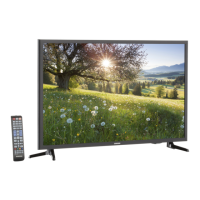
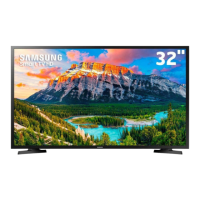


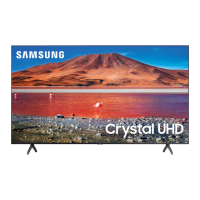

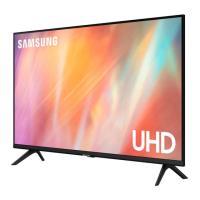

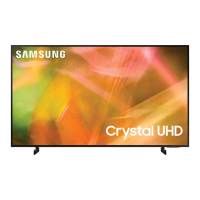


